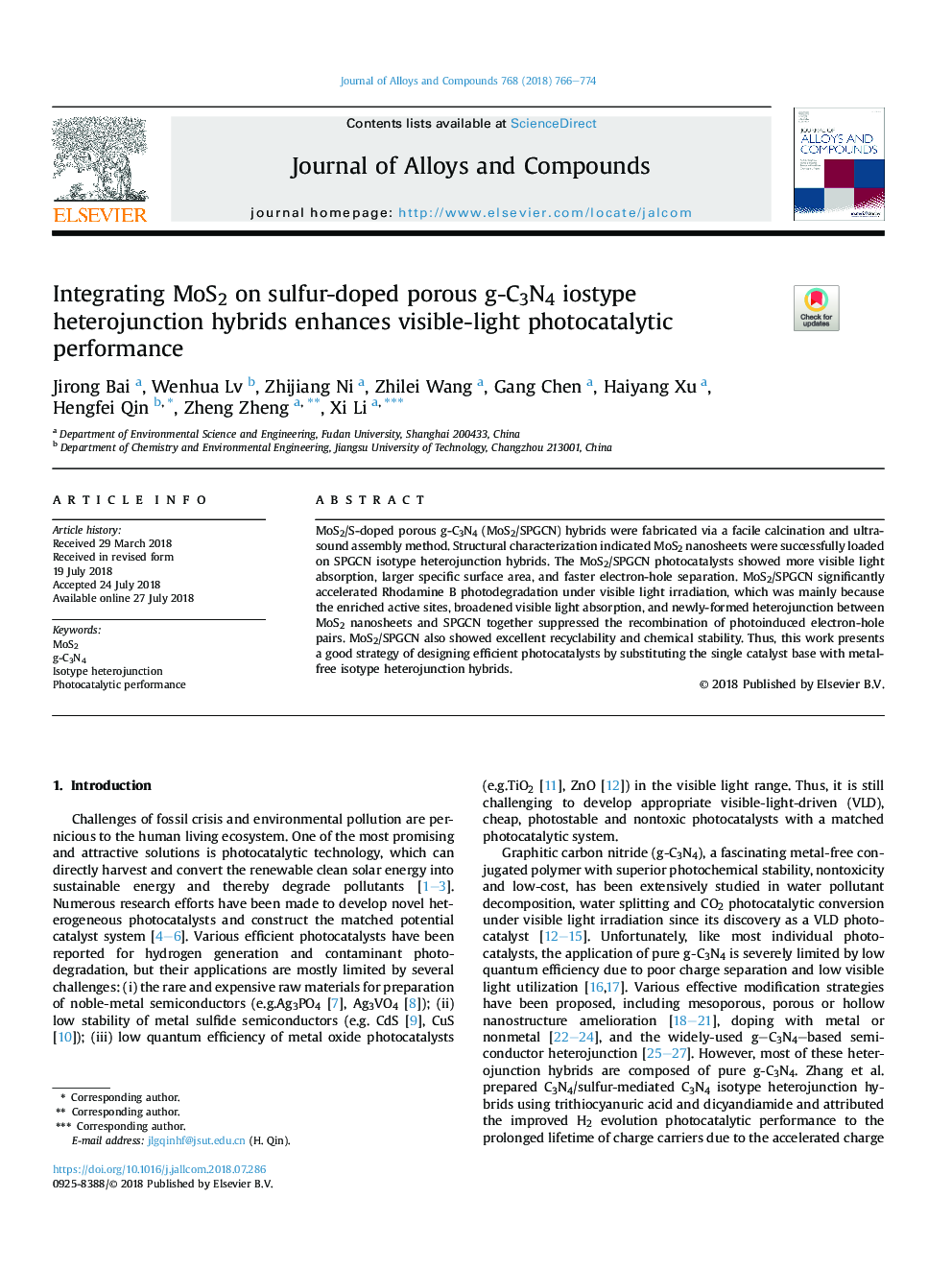| Article ID | Journal | Published Year | Pages | File Type |
|---|---|---|---|---|
| 7990276 | Journal of Alloys and Compounds | 2018 | 9 Pages |
Abstract
MoS2/S-doped porous g-C3N4 (MoS2/SPGCN) hybrids were fabricated via a facile calcination and ultrasound assembly method. Structural characterization indicated MoS2 nanosheets were successfully loaded on SPGCN isotype heterojunction hybrids. The MoS2/SPGCN photocatalysts showed more visible light absorption, larger specific surface area, and faster electron-hole separation. MoS2/SPGCN significantly accelerated Rhodamine B photodegradation under visible light irradiation, which was mainly because the enriched active sites, broadened visible light absorption, and newly-formed heterojunction between MoS2 nanosheets and SPGCN together suppressed the recombination of photoinduced electron-hole pairs. MoS2/SPGCN also showed excellent recyclability and chemical stability. Thus, this work presents a good strategy of designing efficient photocatalysts by substituting the single catalyst base with metal-free isotype heterojunction hybrids.
Keywords
Related Topics
Physical Sciences and Engineering
Materials Science
Metals and Alloys
Authors
Jirong Bai, Wenhua Lv, Zhijiang Ni, Zhilei Wang, Gang Chen, Haiyang Xu, Hengfei Qin, Zheng Zheng, Xi Li,
